Education and literacy are the basis for the formation and development of civil society. In the second half of the 19th century, during the period of dualism, the state paid great attention to the establishment of appropriate institutions and the construction of schools. It is not surprising that the history of many institutions still operating today, such as the Imre Madách Secondary School, began in these times.
Today's Imre Madách Secondary School was founded in May 1881, under the name 7th District State Secondary School of Budapest, and education started there in September of that year. At that time, the school did not yet have an independent building, but rooms were rented for it in the building at 10 Klauzál Street. We can also read about the location of the institution at that time in the 4 November 1886 issue of the daily newspaper Nemzet, edited by Mór Jókai:
"The 7th District State Secondary School of Budapest is currently located in a residential house. There is not enough room in this residential house, which is not suitable for a school anyway, so even recently it was necessary to rent rooms in the neighbouring building due to the opening of a new class. New construction is inevitable."
A drawing from 1894 published in the journal Építészeti Szemle (Source: Építeszeti Szemle, 31 January 1894)
Also in this short article, they provide information that the state spent 62,000 forints for the purchase of the land needed for the construction of the new secondary school, which at the time was bounded by Miksa (today's Osvát), Barcsay and Hársfa Streets. The Építészeti Szemle wrote about the circumstances of the land purchase as follows on 31 January 1894:
"At that time, the minister bought the large plot of land on Barcsay Street for a good price in order to build a model building on this large area, based on which secondary schools could be built. For the minister to be able to buy a large plot of land for this purpose, he bought it in a quite desolate countryside at the time to get it cheaper."
János Bobula Sr., the designer of the school (Source: Művészet, Issue 1, 1904)
The Minister of Religion and Public Education, Ágoston Trefort, had definite ideas about the large lot. The plan was to have a garden and a forecourt in front of the building, but at the same time leave enough space for a spacious yard. In principle, this encountered obstacles, since according to the construction rules of the time, construction could only be done in closed rows in this area. But the mentioned issue of the Építészeti Szemle reveals that an exception was made this time.
"The authority, appreciating the minister's noble intentions, deviated from the rule and exceptionally, given the public nature of the building, allowed the secondary school to be built freely and with a front garden from the street side," the journal wrote.
Figures of Physica and Poetica. The drawings were made by painter Gyula Stetka (Source: Építészeti Szemle, 30 August 1893)
Trefort miniszter az épület terveinek elkészítésével idősebb Bobula János építészt bízta meg. Az nem derült ki, hogy miért éppen Bobula kapta meg ezt a kitüntető feladatot, de az biztos, hogy már volt az iskolaépítésben tapasztalata: based on his plans, the Main Secondary School of the Royal Hungarian Teacher Training Institute, today's ELTE Ágoston Trefort High School was built in 1887.
From the issue of Építő Ipar published on 8 January 1888, it is known that Bobula presented the plan for the placement of the building on the lot to the customer, and the matter was transferred to the Budapest Public Works Council before the building permit was granted.
The Figure of Historia (Source: Építészeti Szemle, 30 August 1893)
The Figure of Philologia (Source: Építészeti Szemle, 30 August 1893)
In the meantime, Minister Trefort died, and the case was put on hold for a short time. The newspaper Nemzet only announced on 3 October 1890, that the secondary school would be built:
"A new institute will be built for the 7th District State Secondary School of Budapest. The Secondary School is currently housed in inadequate rented premises costing 10,000 forints per year, some classrooms of which are subject to objections, and its supply rooms and gymnasium can be said to be downright unbearable. With this in mind, Ágost Trefort already acquired a plot of land years ago for a new building to be erected, which plot has since then represented dead capital. Count Albin Csáky will now use part of this plot to erect a permanent building."
Postcard of the Imre Madách Secondary School from 1943 (Source: Hungaricana/Reference No.: 0108519)
The new Minister of Religion and Public Education, Count Albin Csáky decided – probably for financial reasons – that he did not want to build the new building on the entire lot, but only on a part of it, which is confirmed by the auction notice in the 16 January 1891 issue of Magyar Mérnök- és Építész Egylet Heti Értesítője [Weekly Newsletter of the Hungarian Society of Engineers and Architects].
"A 444.26 square fathom part of the lot at the corner of Hársfa-, Barcsay- and Miksa- Streets in the 7th District of Budapest, owned by the state treasury […], that was purchased for the new building of the 7th District State Secondary School of Budapest, is being sold. The part is located at the corner of Barcsay and Miksa Streets […].”
Due to the changed circumstances, Albin Csáky asked the architect to make new plans. It was then that Bobula designed the Neo-Renaissance style, closed-row building on the corner of Barcsay and Hársfa Street, which is still standing today. The Budapest Public Works Council reviewed the new plans in the spring of 1891, but at that time tenders were already issued for other works (such as masonry, carpentry, woodworking, locksmithing, painting and sculpting).
In 1981, at the celebration organised for the 100th anniversary of the school's existence, the statue of Imre Madách is wreathed (Source: Tükör, 24 May 1981)
The building's main facade and the main entrance face Barcsay Street. The facade was covered with raw brick, while the plinth, columns, dividing cornices, main cornice and balustrades were made of stone. Under the balcony supported by four columns, Bobula placed the main entrance in the central risalit of the building. The beauty of the facade is the four mosaics made by the famous Venetian company Candiani based on the drawings of painter Gyula Stetka.
The mosaics were located on the first and second floors in the two extreme axes of the central risalit. On the first floor, there is the figure of Historia holding a tablet and a pen, and Philologia leaning on the tablet, with an open book lying at her feet. On the second floor, there is an embodied figure of Poetica with a lute in her hand and a laurel wreath on her head, and Physica with torches in her hand.
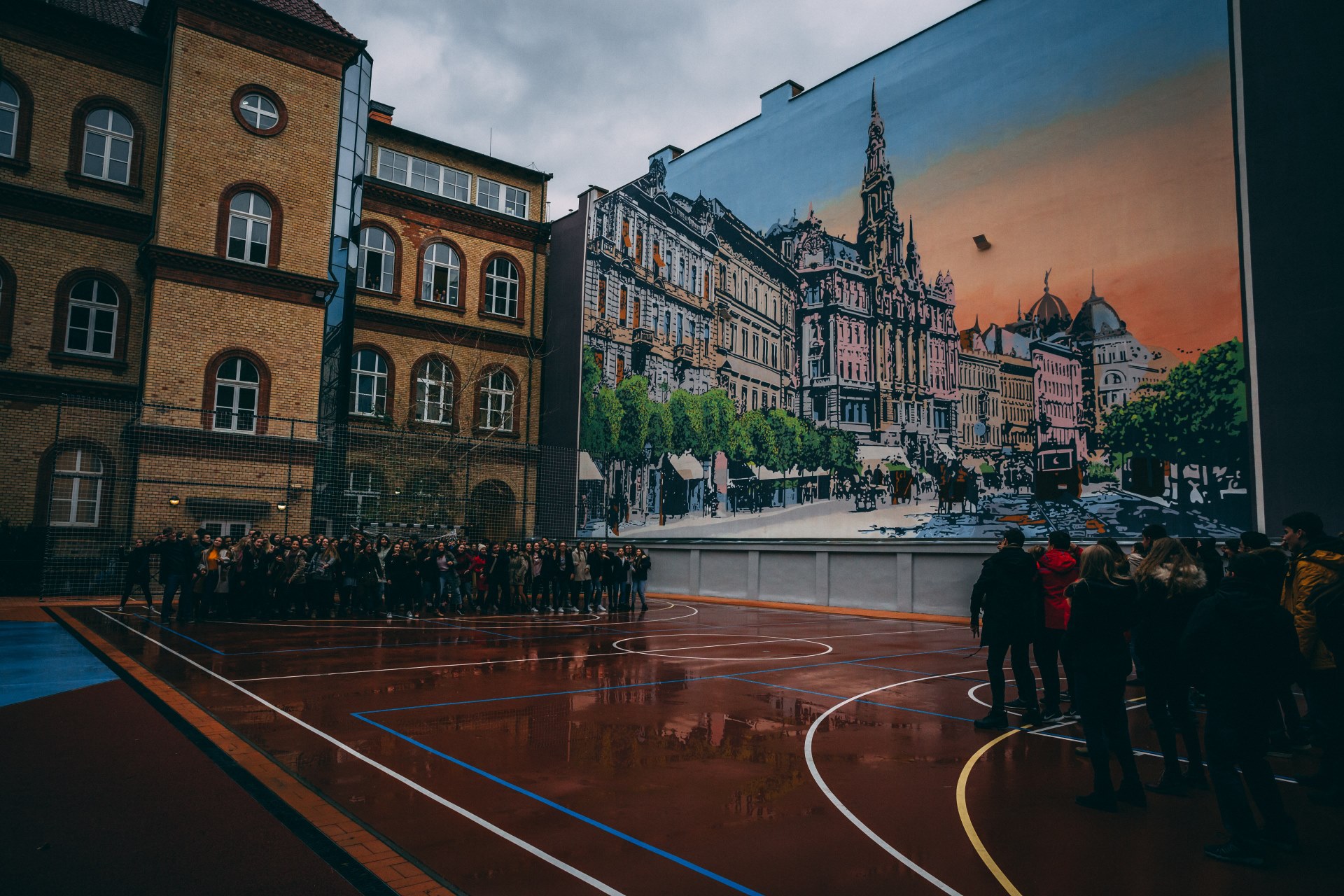
The schoolyard, with the firewall of the neighbouring building, depicts a part of Erzsébet Boulevard and its emblematic building, the New York Palace (Source: mig.hu)
On the ground floor of the building, in addition to the principal's and school staff's apartments, there are two classrooms, a council room, a teacher's library and a room reserved for parents. On the first floor, there are seven classrooms, a natural history lecture hall, a laboratory, mineralogy and a plant and animal storage room, the students' library and a teacher's room. On the second floor, there are five classrooms, a physics lecture hall, a physics storage room, two teachers' rooms, a storage room for drawing tools, a large hall that also served as a drawing room and a so-called "chemical kitchen", which probably meant a laboratory. A large inner courtyard was also created, where the gymnasium was placed in an independent, one-story building.
The state allocated 263,995 forints for the construction, of which Bobula saved a certain amount. The school moved into its new home in September 1892.
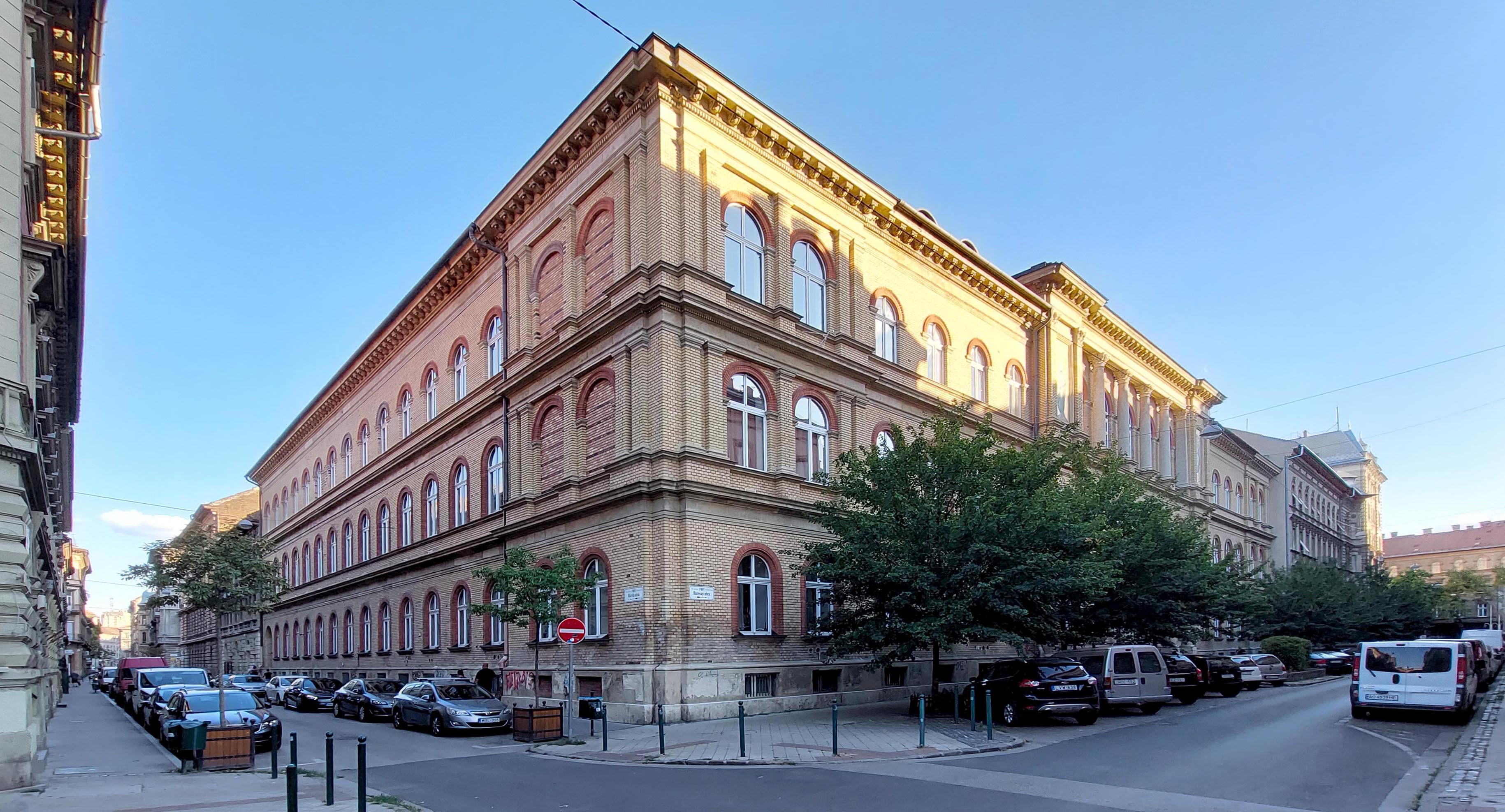
The Imre Madách Secondary School building today (Photo: Balázs Both/Pestbuda)
Many students enrolled at the school, and at the turn of the century it was one of the most populous institutions, which is also confirmed by the Statistical Yearbooks: in 1901, 1145 students started their studies in September. For this reason, they were forced to expand the building: two more levels were added to the ground floor gymnasium, thanks to which they were able to create new classrooms and storage rooms.
"Until now, the secondary schools in the capital have had grey, meaningless names. They were marked according to districts, or they were named after the streets in which the institute's building stood, or after the denomination that ran the school."
- wrote the Nemzeti Újság on 25 June 1921.
The Ministry of Culture decided to name secondary schools after the nation's greats. The Barcsay Street Secondary School took the name of Imre Madách at that time.
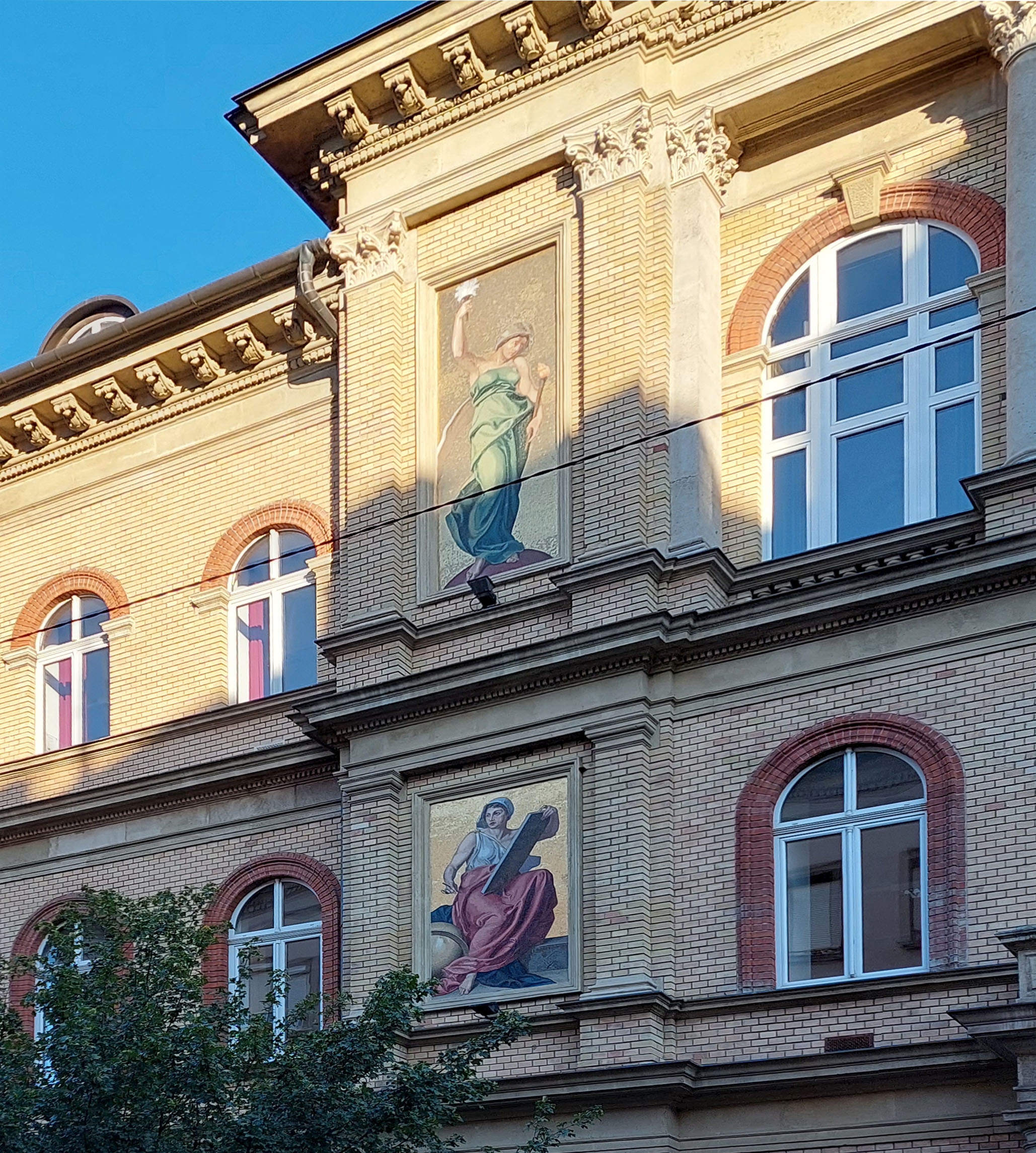
Part of the main facade. The mosaic on the first floor depicts Historia, and the one on the second floor depicts Physica (Photo: Balázs Both/pestbuda)
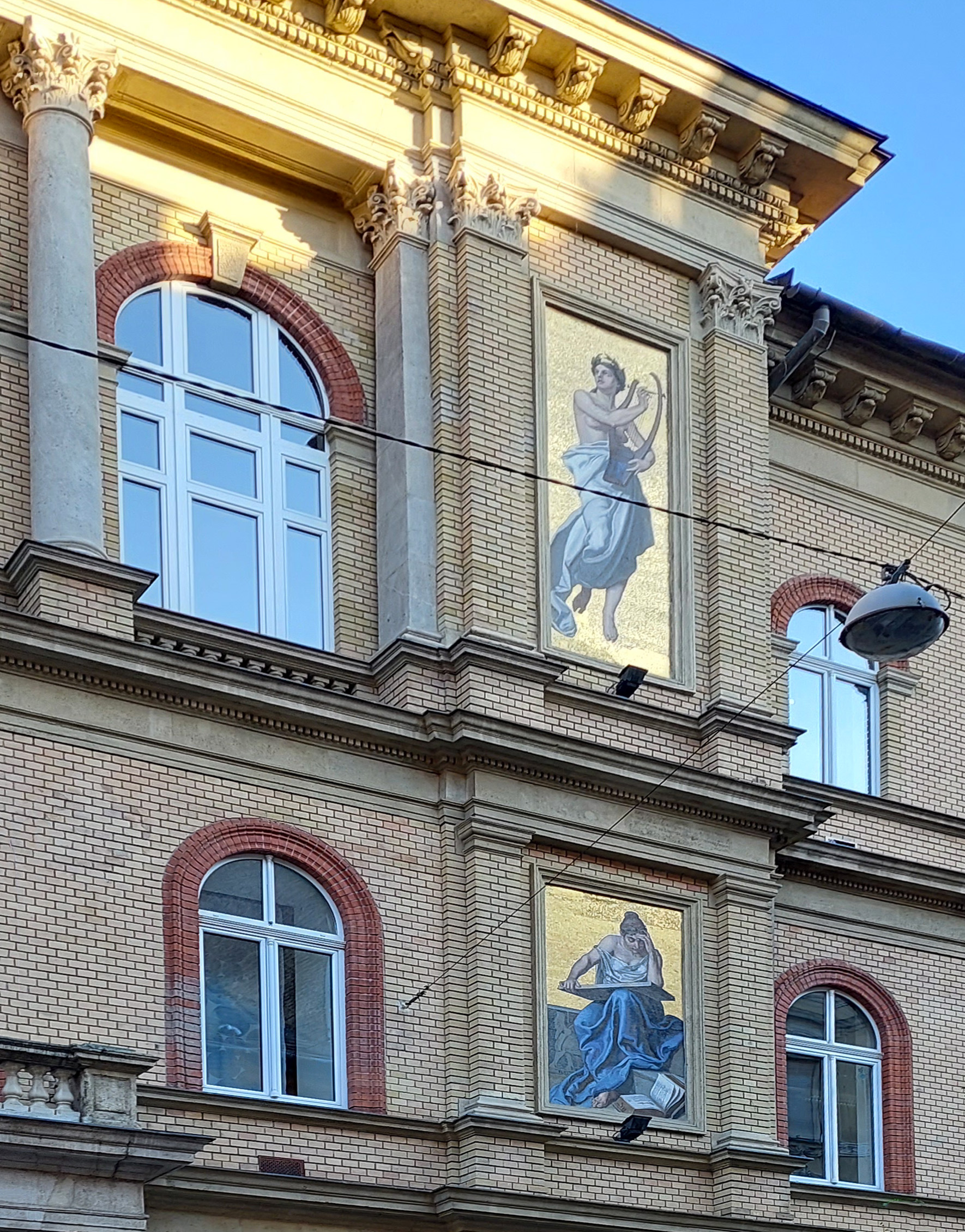
Part of the main facade. The mosaic on the first floor depicts Philologia, and the one on the second floor depicts Poetica (Photo: Balázs Both/pestbuda)
The institution celebrated its 100th anniversary in May 1981. They organised a series of celebrations, which the Magyarország magazine reported on 17 May 1981.
"The series of events of the jubilee week included the opening of a school history exhibition, celebratory student group meetings in literature, history and mathematics, a club afternoon with Russian-language programs, the Madách Day organised on Hajógyári Island, a pedagogic memorial meeting, a meeting of past and present Madách Secondary School teachers, a chamber choir competition, and the unveiling of a commemorative plaque. "
The full renovation of the building was completed in 2005, and the painting of the firewall visible from the schoolyard was completed in 2014. The mural is based on a postcard depicting a part of the Erzsébet Boulevard at the turn of the 19th-20th century, with the emblematic building of the route, the New York Palace.
Cover photo: The main entrance of the Imre Madách Secondary School (Photo: Balázs Both/Pestbuda)

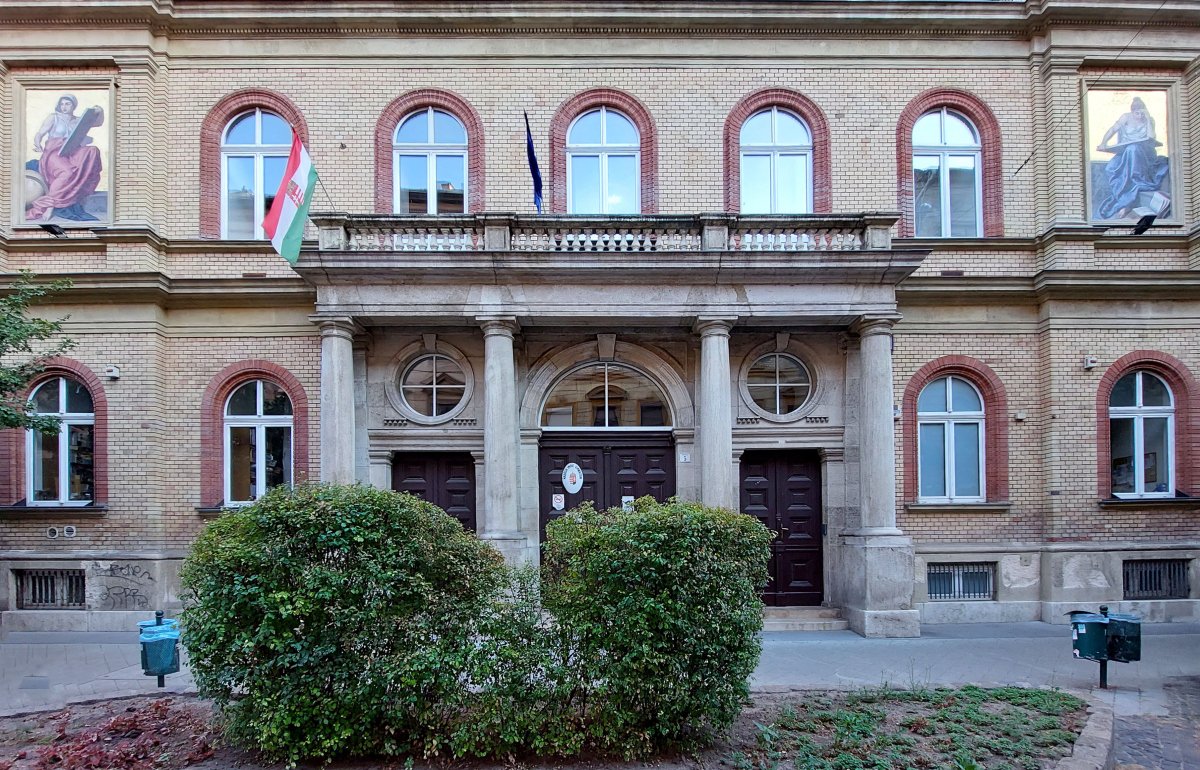





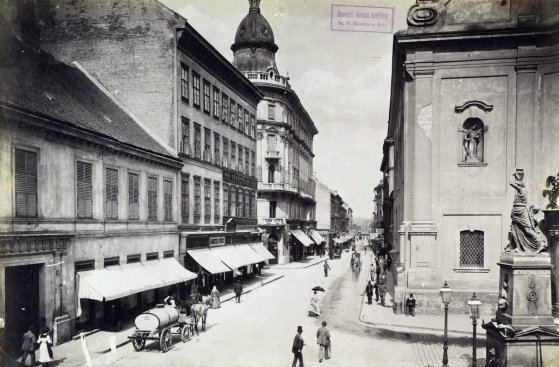




























Hozzászólások
Log in or register to comment!
Login Registration